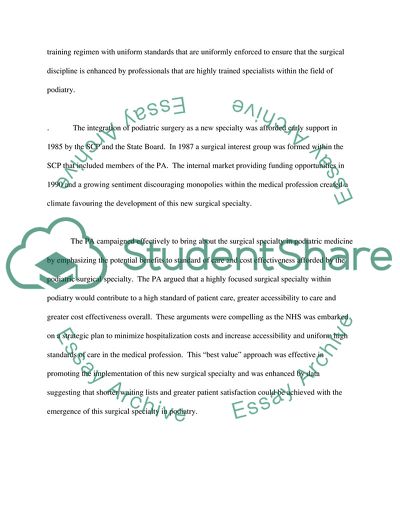Cite this document
(Podiatric Surgery Essay Example | Topics and Well Written Essays - 2250 words, n.d.)
Podiatric Surgery Essay Example | Topics and Well Written Essays - 2250 words. https://studentshare.org/health-sciences-medicine/1718358-evaluate-the-progress-of-professional-development-within-podiatry-in-the-context-of-health-policy-reform-and-a-changing-health-division-of-labour-1980-2008
Podiatric Surgery Essay Example | Topics and Well Written Essays - 2250 words. https://studentshare.org/health-sciences-medicine/1718358-evaluate-the-progress-of-professional-development-within-podiatry-in-the-context-of-health-policy-reform-and-a-changing-health-division-of-labour-1980-2008
(Podiatric Surgery Essay Example | Topics and Well Written Essays - 2250 Words)
Podiatric Surgery Essay Example | Topics and Well Written Essays - 2250 Words. https://studentshare.org/health-sciences-medicine/1718358-evaluate-the-progress-of-professional-development-within-podiatry-in-the-context-of-health-policy-reform-and-a-changing-health-division-of-labour-1980-2008.
Podiatric Surgery Essay Example | Topics and Well Written Essays - 2250 Words. https://studentshare.org/health-sciences-medicine/1718358-evaluate-the-progress-of-professional-development-within-podiatry-in-the-context-of-health-policy-reform-and-a-changing-health-division-of-labour-1980-2008.
“Podiatric Surgery Essay Example | Topics and Well Written Essays - 2250 Words”. https://studentshare.org/health-sciences-medicine/1718358-evaluate-the-progress-of-professional-development-within-podiatry-in-the-context-of-health-policy-reform-and-a-changing-health-division-of-labour-1980-2008.


